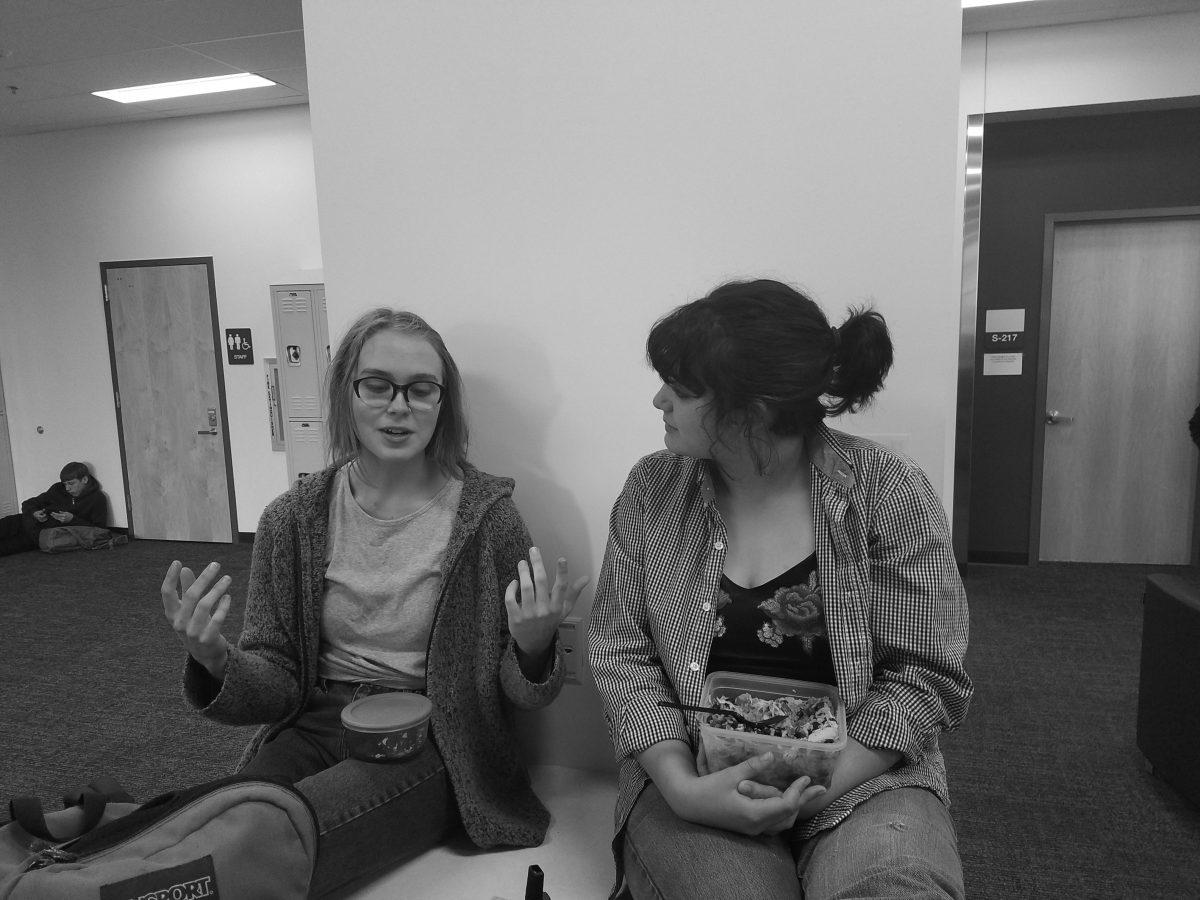
Storytelling is the product of no two people in the world having exactly the same experience. Whether it’s in a conversation or a written piece, stories captivate humanity. Under the storytelling umbrella is an anecdote, which is a short personal narrative that is often humorous. Although not an epic autobiography, anecdotes serve an important purpose in storytelling; widely used but rarely recognized, an anecdote is the difference between showing and telling in writing and speech. This also means the difference between sharing an experience with someone and simply supplying them with information. Experienced student-writer and storyteller Ilse Stacklie-Vogt (11) explains, “It helps the audience relate to the purpose of the speaker or writer.”
Storytelling is used for many purposes in both writing and speaking. The most common use is for entertainment: to get laughs or capture the attention of others, a good example being the movie and short film industry. Stories are also often used for persuasion, to convince an audience of something through personal or indirect experience. People use stories as tools to inform, advise, and present images to the audience. English teacher Pam Garrett shares: “I typically have kids use them in essay writing. Because of those specific details, especially if they’re writing about themselves, those stories of their own lives are very telling.” Anecdotes can show up in anything from poetry, from class discussions to formal college essays. Stories link people together, both in and out of classrooms.
Experience directly impacts a person’s storytelling “bank,” giving them more experiences to share. However, having more stories to tell does not affect the quality. Oftentimes a young person’s knowledge is overshadowed by an older person’s point of view and pre-established facts. This limits student use of anecdotes in their writing because of the encouraged use of more “notable” sources. Stacklie-Vogt comments: “As a student or young person you may not know the actual fact. So I explain a probably fancy concept by saying ‘like that time when this happened’ and then people understand it better.” This demonstrates the usefulness of storytelling for students. Communication between teacher and student serves an important purpose.
Anecdotes, or short personal stories, have many uses: They create a world of diversity in experience and perspective. They are important because they emphasize the usefulness of personal experience, next to that of facts or professional perspectives. Anecdotes represent the variation of experience and inspire compassion. Storytelling is an artform that everyone, even if unknowingly, participates in.


































